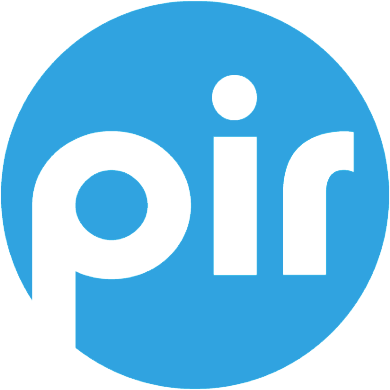By Tony Connor, Director of Marketing, Public Interest Registry
Do you consider yourself an ‘Internet Pro’? If the answer is yes, did you know that the world wide web is different than the internet? If so, do you know what the difference is? If not, we’re here to help!
In 2017, we conducted a nationwide Internet 101 Survey to see just how much the average U.S. consumer knows about the internet. Interestingly enough, 84 percent of participants reported that they are “knowledgeable” about the internet. In reality, participants knew a lot less than they thought. In fact, a whopping 80 percent of internet users don’t know that there is a difference between the world wide web and the internet.
It’s safe to say we were surprised by the misconceptions many people had when it came to the internet, something so many people rely on daily. At Public Interest Registry, our mission is to educate and empower users to use their voices within the global community. As such, we hope to help debunk common internet myths so that the nonprofit community can more efficiently use their channels to reach their appropriate stakeholders and fulfill their mission.
The Internet vs. World Wide Web
So, what is the difference between the internet and the world wide web?
In terms of scope, the “internet” is the overarching system of interconnected networks that allow different computers to connect with one another. Think of it as the highway system.
More narrowly, the “world wide web” is the system on the internet that allows documents to be connected to other documents. Within this web, there are two different hypertext links that allow documents to talk to each other, the HTTP and HTTPS. A hypertext link is a link to a resource, such as a website. It can be found in your web browser’s search bar. Of the two, HTTPS is the most secure, meaning that communication between the browser and website are encrypted. As outlined in the Internet 101 infographic, we recommend using websites that begin with HTTPS when inserting credit card or personal information.
As we think about the broader internet system that keeps us all connected, it’s also important to keep in mind that the internet is not managed or regulated by any one organisation, country or person. Rather, there are a vast number of groups all contributing in different ways to keep the system churning, including standards and protocol developers, engineers, governments, corporations, nonprofits, regular users and civil society. The Internet Corporation for Assigned Names and Numbers (ICANN) is charged with coordinating the domain name system (DNS) and brings together different internet community viewpoints to develop policies that make the internet run.
Domain Name System
Did you know, only 31 percent of U.S. consumers could correctly define a “domain name system”? The domain name system (DNS) is like an address book for the internet. It translates the easy to remember internet domain names into an IP address. Within the internet, every computer has a unique address – think of a sequence of numbers like your phone number or address. This string of numbers is known as an IP address. Since the IP address is a grouping of random numbers, the domain name can be used in place of the IP address.
Within the domain name system are TLDs: top-level domains. The TLD appears at the end of a website or email address. An example would be www.pir.org. In this example, the .org is the top-level domain. TLDs are classified within two categories, generic top-level domains (gTLDs) and country code top level domains (ccTLDs). Generic top-level domains are exactly as they sound, they’re generic and can be used anywhere in the world by anyone on the internet. For example, the .org, .net and .ninja domains are considered generic and can be used by anyone. Finally, the country code top-level domains are given to countries based on the ISOC 3166 list of country codes.
The Three R’s
The internet hosts a multitude of domains and domain name systems. In order for a domain name to be created and established, the 3 R’s – Registries, Registrars and Registrants – must work together. They each play a significant role within the internet.
So where do we – Public Interest Registry – fit into the picture? As a “registry”, Public Interest Registry is responsible for managing domain names for registrants.
- Registry – A registry is an organization that manages a top-level domain (TLD), like .org, .com. .net and others. In addition to managing a TLD, they maintain a master list of all the domains in that TLD, use technical parameters to ensure domain names and TLDs can be reached anywhere on the Internet, and work hand-in-hand with registrars to bring domain names to the public. Public Interest Registry, a registry, is an organization that manages the .org domain.
- Registrar – A registrar is an accredited organization that sells domain names to the public. Registrars can sell domain names from many or all TLDs.
- Registrant – To complete the process, the registrant – an individual or organisation – purchases the domain name directly from the registrar.
Through debunking these internet myths, we hope to educate and empower nonprofits to use the internet more efficiently. If you think you’re an ‘Internet Pro,’ be sure to test your internet knowledge by taking the Internet 101 Survey. Show off your internet smarts and share your results on social media by tagging Public Interest Registry.

